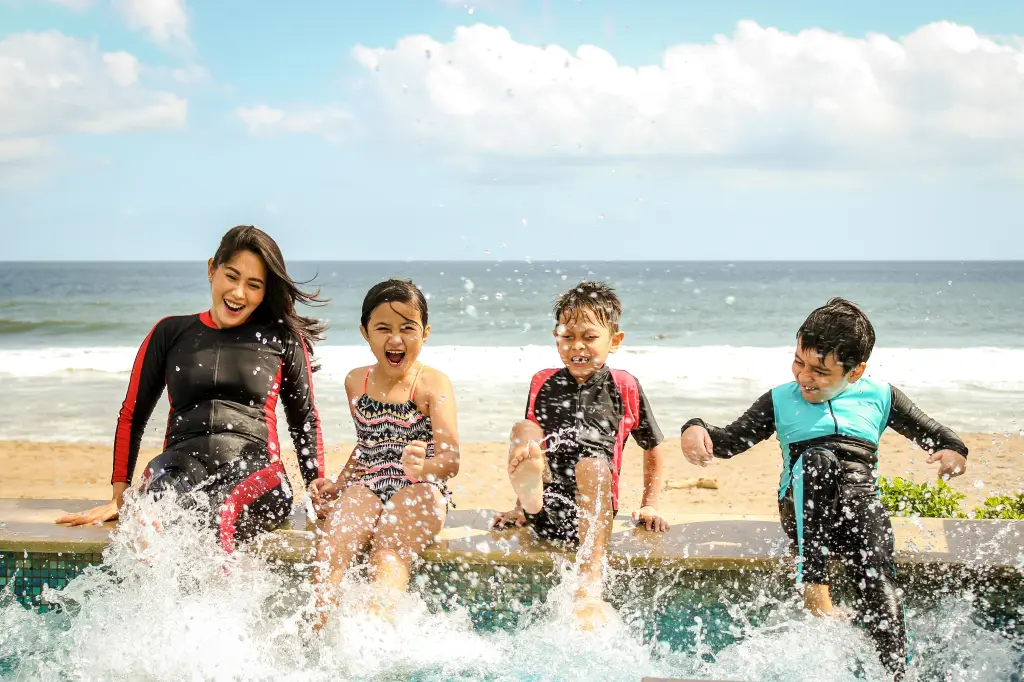What every parent should know
First and foremost, parents need to understand one crucial fact: all children should receive swimming lessons.
Each year, over 4,500 people in the United States lose their lives to drowning, with drowning being the leading cause of death for children aged 1 to 4. While swimming lessons can’t prevent every tragedy, they can significantly reduce the risk. Children don’t need to master advanced swimming techniques like butterfly strokes, but knowing how to return to the surface, float, tread water, and reach safety can be life-saving.
10 important facts about swimming lessons for parents
When considering swimming lessons for your child, here are some key points to keep in mind:
- Children are typically ready to learn around age 4: Most kids develop the cognitive skills needed to follow instructions and retain what they’ve learned by age 4. Some may be ready a bit earlier, but 4 is generally a good starting point.
- Lessons for younger children (ages 1 to 4) can still be beneficial: While very young children may not be able to fully learn to swim, they can still acquire basic skills like reaching the pool’s edge if they fall in.
- Ensure the learning environment is safe: Safety is paramount. Inspect the pool or beach yourself to make sure it’s clean, well-maintained, and properly supervised. There should be designated shallow and deep areas, as well as accessible lifesaving equipment and clearly posted safety rules.
- Teachers should be well-trained: Parents should confirm that instructors are properly trained and certified by reputable organizations like the Red Cross or YMCA. It’s important that teachers have adequate experience and are regularly evaluated.
- Class size should be appropriate: Especially for young children and beginners, class sizes should be small enough that instructors can keep all students within arm’s reach. As children advance, groups can grow slightly, but safety and supervision should always come first.
- Lessons should follow a structured curriculum: There should be a clear path of progression, with students placed in classes that match their ability level. Swimming lessons typically start with water acclimation and gradually advance to mastering various strokes.
- Parents should have some opportunity to observe: It’s important that parents are allowed to observe at least part of the lesson. Although watching the entire session may not always be helpful, observing the start or end of the lesson ensures you stay informed about your child’s progress.
- Use flotation devices thoughtfully: While some flotation devices like “bubbles” can help at the start, they should not be overly relied upon. As lessons progress, these aids should be gradually phased out to encourage independent swimming.
- Fear of water isn’t a reason to quit: Many children naturally fear water, and while it’s important not to force them, quitting isn’t the solution. Start slowly with plenty of encouragement. A skilled instructor should be prepared to work with children who are nervous.
- Swimming skills don’t eliminate drowning risks: Even proficient swimmers can face dangerous situations, whether from exhaustion, injury, or other factors. It’s essential that children are always supervised around water and wear life jackets for activities like boating.
For more information on drowning prevention, the Centers for Disease Control and Prevention (CDC) provides valuable resources. The American Red Cross also offers online water safety courses for parents and caregivers, as well as safety videos for kids. Many public pools and organizations such as the Boys & Girls Clubs and the YMCA offer swimming classes for all age groups.








